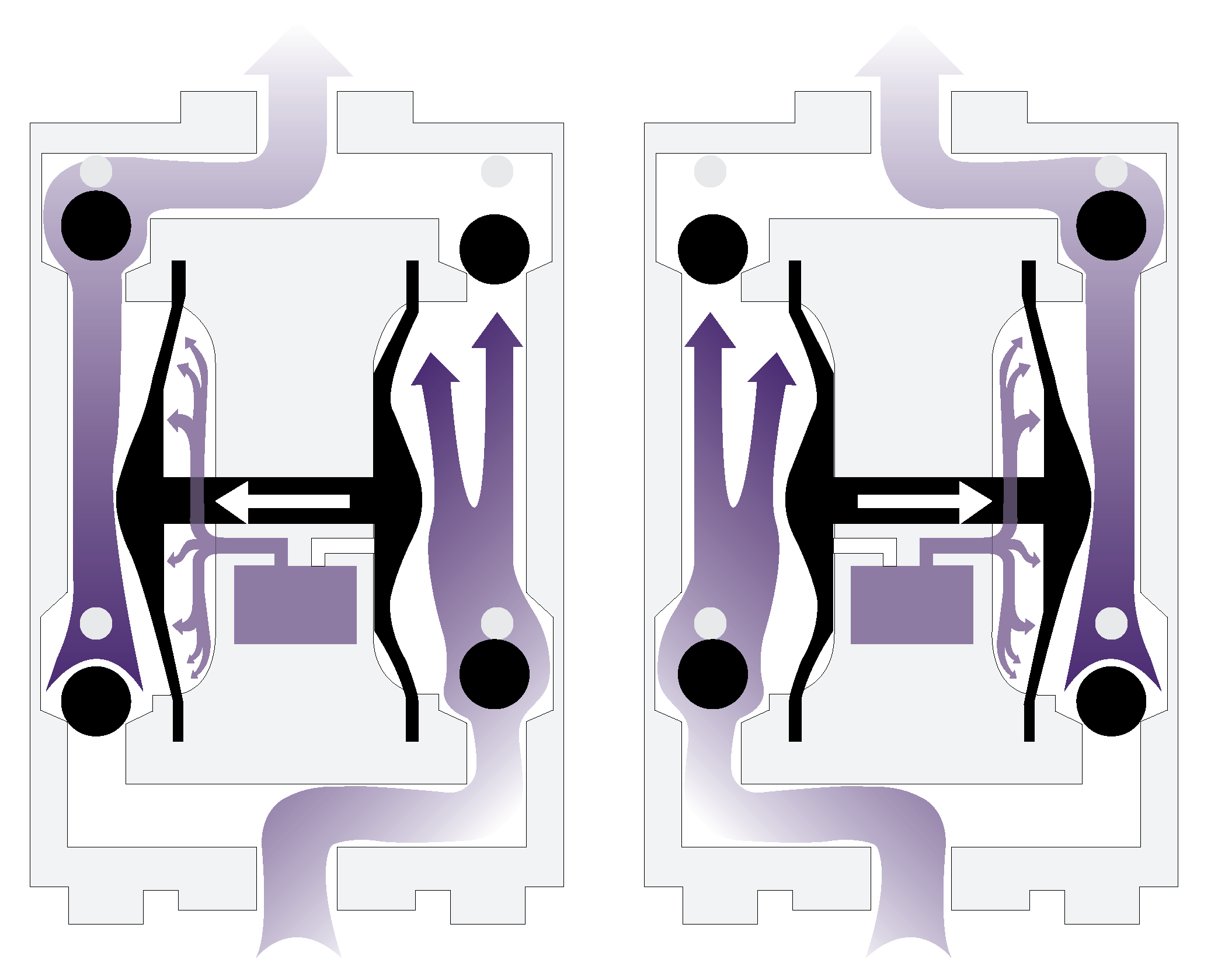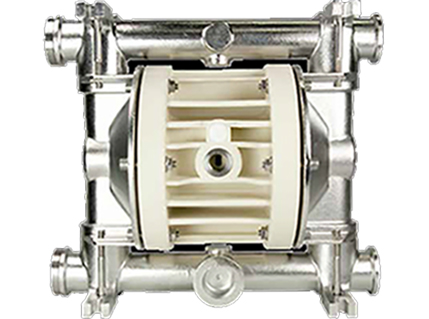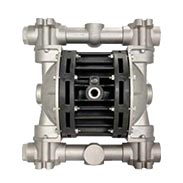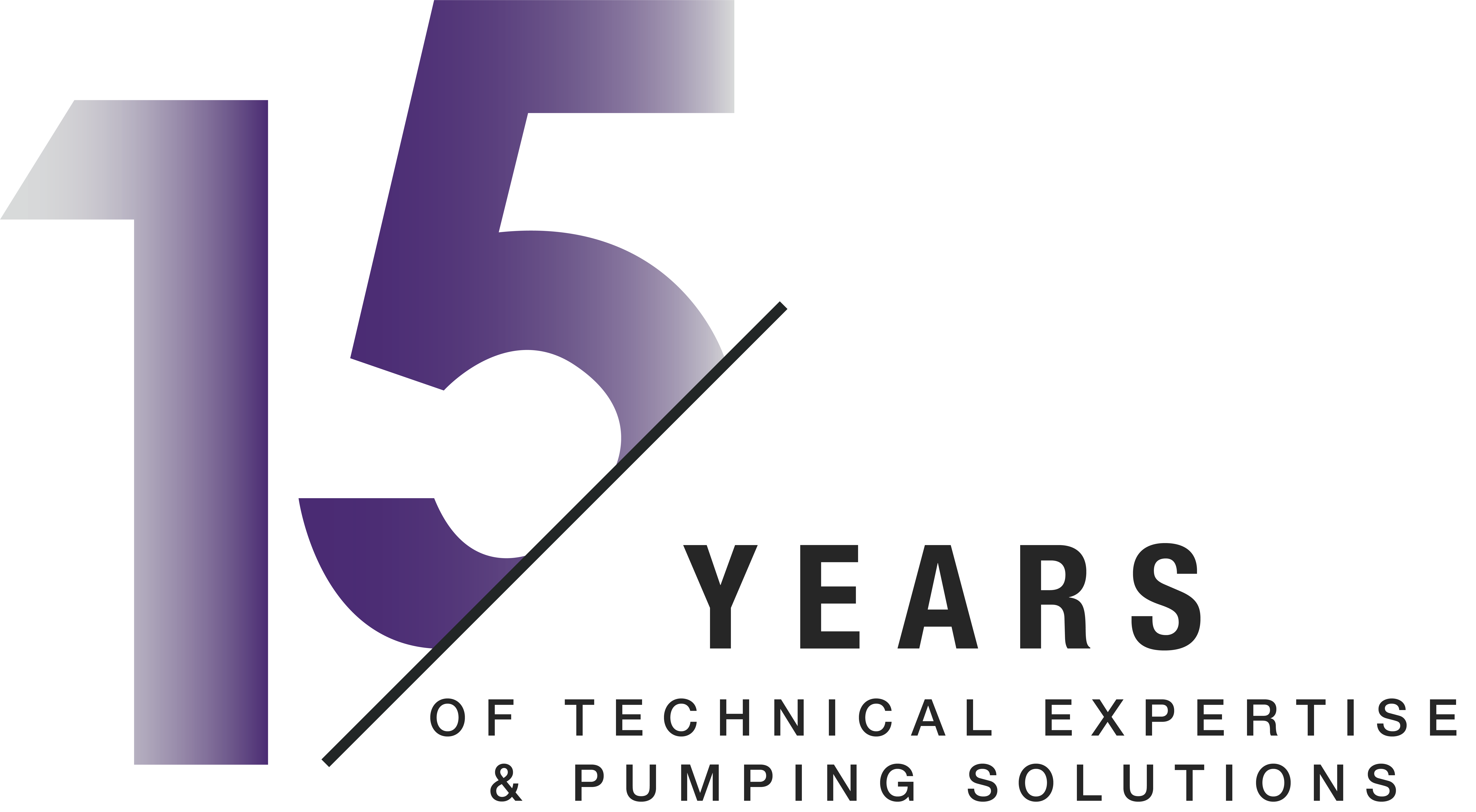How do air operated diaphragm pumps work?
Air operated diaphragm pumps, or AODD pumps as they are commonly abbreviated to, are a type of reciprocating positive displacement pump that are driven by compressed air rather than an electric motor. This design of pump is made up of two chambers, each with their own inlet check valve, outlet check valve and diaphragm; hence why they are also referred to as double diaphragm pumps.
The back and forth movements of the diaphragm shifts the air supply shifts from one chamber to the other which enables the two chambers to operate simultaneously. As the diaphragm moves in to the one chamber it forces the fluid inside into the outlet, whilst the other chamber fills up with fluid drawn from the inlet. As the diaphragm moves back into the opposite chamber, the fluid now in that chamber is forced out and the other chamber begins to fill up.

Design benefits
Safe and clean operation – With no motors, packing or seals, the AODD pump is less prone to leaking fluid than typical centrifugal pumps. This makes it a good solution when handling volatile, corrosive or dangerous liquids that may cause harm if leaked, as well as just generally being a cleaner, lower maintenance option.
Good dry running capabilities – Unlike other pump types, air operated diaphragm pumps are able to run dry or against a closed discharge without causing immediate damage to the pump. Excessive back pressure caused by a dead head stops further operation until the discharge opens. This also makes them suited for a wide range of applications within factories as they are often “fit and forgot” being low maintenance, as they are unlikely to be damaged through process stops.
Self priming – Air diaphragm pumps are self-priming and therefore have good suction capabilities (up to 8m when wetted) without need for a manual priming device. They are consequently often select for applications where the suction conditions are difficult for example the emptying of tanks and containers.
Flexible performance – AODD pumps are versatile in their performance, as to meet exact flow rate or pressure requirements of a particular installation you can simply adjust the air inlet pressure. In addition, thanks to the vast range of materials that they can be produced in, air operated diaphragm pumps are compatible with a wide variety of fluids ranging in viscosity from fuels to chemicals to food stuffs. To pump more viscous fluids the pump can simply be reduced in speed to cope with thicker fluids.
Typical applications of an AODD pump
Air operated diaphragm pumps are a versatile design suitable for the pumping of low and high viscosity fluids, including those that contain high solid content and shear sensitive mediums. The wide variety of materials that the diaphragm can be constructed of combined with the pumps’ seal-less design, means that even aggressive chemicals and acids can be handled.

As AODD pumps are powered by compressed air supply rather than an electric motor, they are a popular alternative solution for installations where mains power may not always be available. This is also why it is common for smaller sized air diaphragm pumps to be used in portable applications, and why they are often used in hazardous environments where in may not be safe to have an electricity supply. They are commonly used in industrial process throughout the UK as compressed air is very frequently used as a powered medium within these environments for driving other tools and equipment.
AODD pumps when fitted with a tube onto the exhaust of the pump which is vented to atmosphere outside the fluid (snorkel) can be submersed in a liquid.
The air operated diaphragm pump design makes it suitable for use in a wide range of industries:
- Fuels and oils
- Chemicals and acids
- Resins, glues, paints and inks
- Waste water
- Food and cosmetic product
The way in which an air operated diaphragm pump works means that there is some pulsation in its flow output. However this can be reduced by using pulsation dampeners in the discharge pipe, which then makes them suitable for metering applications and pulse sensitive delivery and transfer applications.
Below are the four common installation types for AODD pumps.

AODD pump accessories
Various accessories can be supplied to optimise the use and installation of the air diaphragm pump:
- Reinforcement rings to prevent breakages to the manifold connections.
- Air regulator kits to allow accurate control of the air flow to the pump and therefore its performance.
- Exhaust regulator and shut-off exhaust valves
- Anti-vibration feet for mounting to the bottom of the AODD pump to absorb any vibration caused whilst in operation to relieve the pipework from any stress.
- Fluid and air connection isolation valves to isolate the pump for maintenance purposes.
- Hose tails, hose clamps and flexible hose for fitting to and from the pump fluid & air connections.
- Check valves designed for fitting to end the suction pipe. These prevent the process fluid from flowing out of the suction pipe so that the AODD pump does not lose its prime.
- Flow meters for measuring the flow rate and total amount of fluid dispensed.
- Stroke counters for fitting to the air exhaust to monitor the number of strokes taken by the pump. They can be fitted with a volt free contact output for integrating into a PLC system so that the operator can monitor the operation of the pump and control maintenance. Where there isn’t a PLC system to integrate into, an LCD display can be used to display the number of strokes locally.
- Pulsation dampeners can be mounted into the pumping assembly to minimise pulsations, vibrations and water hammer to provide a smooth, gentle flow. They adjust to meet application conditions without having to be manually calibrated.
- Pneumatic batch controllers allow you to set the pump to automatically dispense a certain amount of fluid without the need for any electrical connections. The unit will monitor the number of strokes taken by the pump by and therefore the volume displaced. When the AODD pump has reached the pre-set value the pump is stopped automatically.
- Pneumatic level control systems may be installed in sumps, pits or tanks to start and stop the pump at certain level without the need for electrical connections. It is achieved by the controller monitoring the difference is air pressure between the 2 air hoses mounted into the container.
- Guardian systems prevent the pump from operating inefficiently by monitoring the pressure and changing its output if it goes above or below the set point. This ensures the pump stops if the diaphragm was to rupture, if it is dry run or run against a dead head.
- Twin suction and discharge manifolds enable the AODD pump to empty multiple containers and either dispense to multiple delivery lines or a common delivery line and mixing the fluids during the pumping operation.
- Low energy air pump is a patented and unique design of air operated diaphragm pump. It offers lower operational costs and significantly reduced air consumption - up to 70% energy savings by means of providing an ultra-low required start-up pressure (0.1 Bar) vs 1.2 Bar on standard pumps.
- Trolley systems are often used to enable the mobility of the air operated diaphragm pumping systems. Applications can be as simple as the pump only mounted onto the trolley or a bespoke system containing hose reels and filtration for example.


